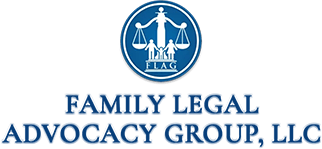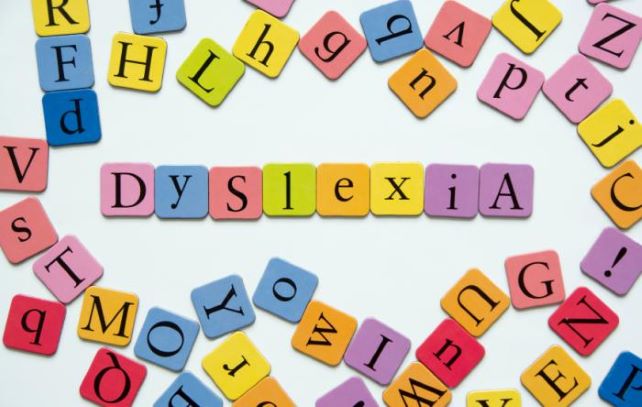Before I was a dyslexia advocate, I was a mom sitting at the pool and complaining to a woman I will call Barbara about my daughter’s school. Barbara had four children — the youngest still in college, the others launched into different adulthoods — and was one of those moms who got her kids, who deftly described the job of being four different moms to four different children.
I was speculating, I think, about how my daughter Phoebe, who has dyslexia, was being affected by attending her public middle school, and I asked for Barbara’s advice. “Oh,” she said, “I don’t know. My kids with no issues, I sent to public school. My kids with issues, I sent to private school. I thought that’s what you did.”
She smiled at me as if it was a candid piece of guidance. Life hack! We don’t send kids with issues to the public schools.
First, I felt poor (how do people survive sending multiple children to private school and then four children to college?), then I felt dumb (was the obvious solution right under my nose?). And then I felt angry. I said to Barbara, “Oh, and it’s all right with us if the public schools just don’t serve kids with learning problems?” After all, about one in five children has learning and attention problems, and don’t we need our public schools to help them become productive adults? Barbara gave me another smile, a kind one that seemed to say, “Of course you’re right, my dear.” Then she put on her goggles to do her laps.
Conversations such as this one, as well as my experience with Phoebe, sparked an interest in dyslexia and advocacy, and I ended up serving two years on a task force to make recommendations about dyslexia education in Maryland. (Much of what follows was influenced by the experts I met while on the task force, but the opinions expressed are my own.)
Through this experience, I’ve come to understand that reading is critical to a safe and productive adulthood, and a prerequisite to participation in civic life. A lawsuit filed this year against the state of Michigan contends that the opportunity to learn to read should be seen as a constitutional right — and a right that is being violated in Detroit, where only 6 percent of fourth-graders and 7 percent of eighth-graders read proficiently, according to National Assessment of Educational Progress scores. Whether this argument moves you or not (yes, the opportunity to learn to read is not spelled out by the Constitution), we should all become more aware of dyslexia and the policy changes needed to improve millions of lives.
The arc of Phoebe’s treatment, I later realized, was typical of many students with dyslexia who need significant one-on-one help to obtain a good outcome. When she struggled with reading in kindergarten and first grade a decade ago, we tried not to fret too much, because her teachers told us that late bloomers often “take off” and read fluently by third grade. In second grade, we found her a private, after-school tutor. Yet even after two years of one-on-one instruction, the information wasn’t “sticking” from one session to the next. “I know this is hard to hear,” one of her tutors told me, looking at my face and recognizing my skepticism. But the tutor understood that Phoebe fit the best definition we have for a dyslexic: She couldn’t read even after having been provided with very adequate instruction.
It was now time to pay for outstanding instruction — and word in my neighborhood was that I could find it at the Speech-Language Department of the Lab School of Washington, D.C. Phoebe did an intensive summer program before fourth grade, then was tutored twice a week there during the school years from fourth through sixth grades, and more sporadically elsewhere for a couple of years thereafter. Conservatively, we spent more than $35,000 on tutoring; the going rate for speech and language pathologists is more than $100 an hour. Every six months or so, I would eagerly ask her tutor, “How’s it going?” and hope to hear, “We’ve turned the corner.” Instead, I would be told that Phoebe was making steady progress at holding on to more letter combinations and sounds, and that her speed was not as slow as it used to be. This went on for years.
While not thrilled about the tutoring, Phoebe recognized that the sessions were “better” than the help she was getting at public school, even from reading specialists and special educators. Why was this? I believe it was because her tutor was using an Orton-Gillingham-based approach to help her remember phonics — the word sounds that “normal” readers can’t recall learning to recognize in print because their brains held on to that information like flypaper in first grade. Developed in the early 20th century, Orton-Gillingham emphasized explicit, sequential, multisensory instruction (hearing, saying, tracing and writing). For example, Phoebe and her tutor might spend a session on the letter combination “ow” and the different sounds it makes, then review letter combinations Phoebe had mastered earlier. The training and materials for programs based on Orton-Gillingham tend to be expensive and work best one-on-one or in small groups, which may explain why this particular intervention wasn’t available at her school.
During the summer before eighth grade, Phoebe’s tutor reported that her grasp of phonics was now in the average range, which meant she could decode nonsense words (like a line from “Jabberwocky”) about as well as her peers. But her fluency, the speed at which she read, was too slow for good comprehension or enjoyment. The fix for fluency was not more expensive tutoring in phonics (hallelujah!) but simply more time spent reading. Unsurprisingly, Phoebe thought books were “boring.” “If only she could find something that captured her interest,” her tutor said. During the school year, Phoebe came across that something: a smartphone app called Wattpad, where she read self-published stories, many of them by teen authors. She sweet-talked her teachers into accepting Wattpad as her free-reading book.
The summer before ninth grade, Phoebe was sitting on the deck with a teen romance novel. I saw her turning pages at my speed and thought she must be skimming. “What are you doing?” I asked. “I’m reading,” she said. “What do you think I’m doing?” I snapped a photo of Phoebe with her paperback — memorializing this mundane yet magical scene. Giddily, I texted it to my mother. Teachers and special educators in the public schools had helped Phoebe learn to read. But I remain keenly aware that she probably wouldn’t be reading fluently today if my husband and I hadn’t had the resources to provide her with a few years of the best intervention around.
According to the National Center for Learning Disabilities, 20 percent of U.S. students have learning or attention problems. A small subset of these children — just over 6 percent — are formally identified as needing special education services; for many of these students that identification does not occur until third or fourth grade. Students with learning disabilities — brain-based difficulties in reading and math — are the largest group of special education students. And dyslexia is the most common learning disability; estimates of students affected vary between 5 and 17 percent of the general student population.
Parents of children identified as having learning disabilities might find it reassuring to read the federal laws pertaining to this group. The Individuals With Disabilities Education Act (IDEA) in particular says wonderful things about the services public schools should be providing. But full funding of the act has never occurred. While Congress set the maximum grant for each state at 40 percent of the extra cost of special education, federal grants to the states under IDEA in 2010 covered about 17 percent of the excess cost, according to a paper by economists Laudan Aron and Pamela Loprest. Without money and stronger accountability systems, the best-practice services described in the law are aspirational rather than guaranteed.
Given those realities, it’s not surprising that academic and social and emotional outcomes for many students with learning disabilities are bleak. According to the National Center for Learning Disabilities, 18.1 percent of students with learning disabilities dropped out during the 2013-14 school year — nearly three times the rate of all students. They also have higher rates of absenteeism, suspension and being bullied. And their graduation rate is 70.8, lagging 10 percentage points behind the general population. In the past decade, nearly half a million students with learning disabilities left school without a diploma, placing them at high risk for unemployment and involvement in crime.
For poor and minority children in underserved schools, the situation is even more dire. Kalman “Buzzy” Hettleman, a longtime education policy researcher, describes the likely trajectory of a student with dyslexia in a low-income school: “The student falls behind and may not even be identified as needing extra help. If he or she is identified, the assistance is typically weak. By third or fourth grade, the student is years behind grade level and exhibiting behavior as well as academic problems. Referral to special education follows, [but] the student would not need special education if he or she had received timely interventions in general education. Moreover, the eventual help provided by special educators is too little, too late to enable the student to be successful.”
Affluent children with learning disabilities often receive services both inside and outside the public schools. But “when poor and minority students fail to read, school systems attribute that failure to the students and their families, rather than [to] the inadequate instruction the school is providing,” says Hettleman, an attorney who has represented hundreds of poor children pro bono. “The parents often do not have the clout to demand better instruction or intervention in the schools and lack the resources to get the tutoring and help on their own.”
For example, in Maryland special education census data shows this lack of clout in private school placement: In 2016-17, white students, who are 37 percent of special education students , secured 76 percent of parentally requested private placement at public expense, whereas African-Americans, who make up 41 percent of special education students, secured 11 percent, and Latinos, who make up 14.5 percent of special education students, secured 5 percent.
It stands to reason that conversations about dyslexia are more likely to take place among parents who can afford tutoring. “When I go to dyslexia conferences and talk to other advocates, I often say, ‘We are not talking about this enough in my community,’ ” explains Lavaunda Roundtree, an African-American teacher, academic therapist and dyslexia advocate who served on the task force with me. “I want parents not to be embarrassed or ashamed. If a child is not reading, it is an emergency. Children who struggle to read do not need to be doomed to a life of illiteracy.”
No one — parents, teachers or policymakers — can look at the outcomes for public school students with learning disabilities and have confidence that merely working to secure special education status for individual children will save the day. It will take other steps.
Mandatory screening for predictors of dyslexia in kindergarten or first grade would be a good start. Research has shown we can reliably spot dyslexia tendencies — such as difficulty breaking down words into sounds or slow processing speed — before children are reading. (For example, a child could be asked to rhyme and identify sounds in words, or to quickly say aloud colors and numbers that they see.) Catching a tendency toward dyslexia earlier could make the needed interventions shorter. “The brain is more plastic at earlier ages, so a child treated at 5 or 6 may make progress more quickly than an older child,” says Donald Bolger, professor of human development at the University of Maryland. “Second, the child has not been burdened with the frustration of reading failure, so is more motivated to read.”
Twenty 20 states have laws regarding dyslexia screening, according to Laura Schultz, a state leader for the advocacy group Decoding Dyslexia Maryland.
It’s also important to improve teacher training. Reading success depends in large part on five scientific components — phonemic awareness, phonics, vocabulary, fluency and comprehension — according to the National Reading Panel, which was established by Congress to determine the most effective way to teach children to read. Yet although the panel’s findings were released in 2000, most teacher training programs haven’t developed curriculums that cover those components, according to the National Council on Teacher Quality, a group that is highly critical of education schools. “Teacher educators have been more resistant than any group I can think of in reflecting scientific research when it comes to reading,” says Kate Walsh, the organization’s president. “Researchers consider this case closed, but changes have been slow.” According to an NCTQ study, only 39 percent of 820 elementary education programs surveyed in 2016 included a lecture or assignment on each of the scientific components of reading.
The social and emotional climate dyslexic students experience in school is another cause for concern. Here, the public schools can learn from private dyslexia schools. Melissa Wood, director of the Speech-Language Department at the Lab School, says that when third- or fourth-graders arrive there from public school, “all of a sudden you see the sadness and anxiety dissipate. They are with other kids who are also having to work very hard.” To nurture resilience in children with dyslexia, public schools need to adopt private school approaches, such as grouping students working on similar challenges; documenting improvement in concrete, appropriate ways (students are understandably disheartened by assessments that merely show how “off” the typical timetable their reading is); and educating students about dyslexia and brain plasticity.
Finally, we must accept that there are no quick fixes, and that solutions might cost money. As I learned with Phoebe, it can take a lot of practice for the brain to master phonics, let alone acquire all the other components of reading. “Tutoring — with an evidenced-based program — is the intervention that has the most scientific research behind it,” says Hettleman. “Yet almost no tutoring of any quality goes on in the public schools. Providing students with the tutoring they need will of course cost money, but nothing like the money that is spent down the road in special education costs and lack of adult productivity.”


